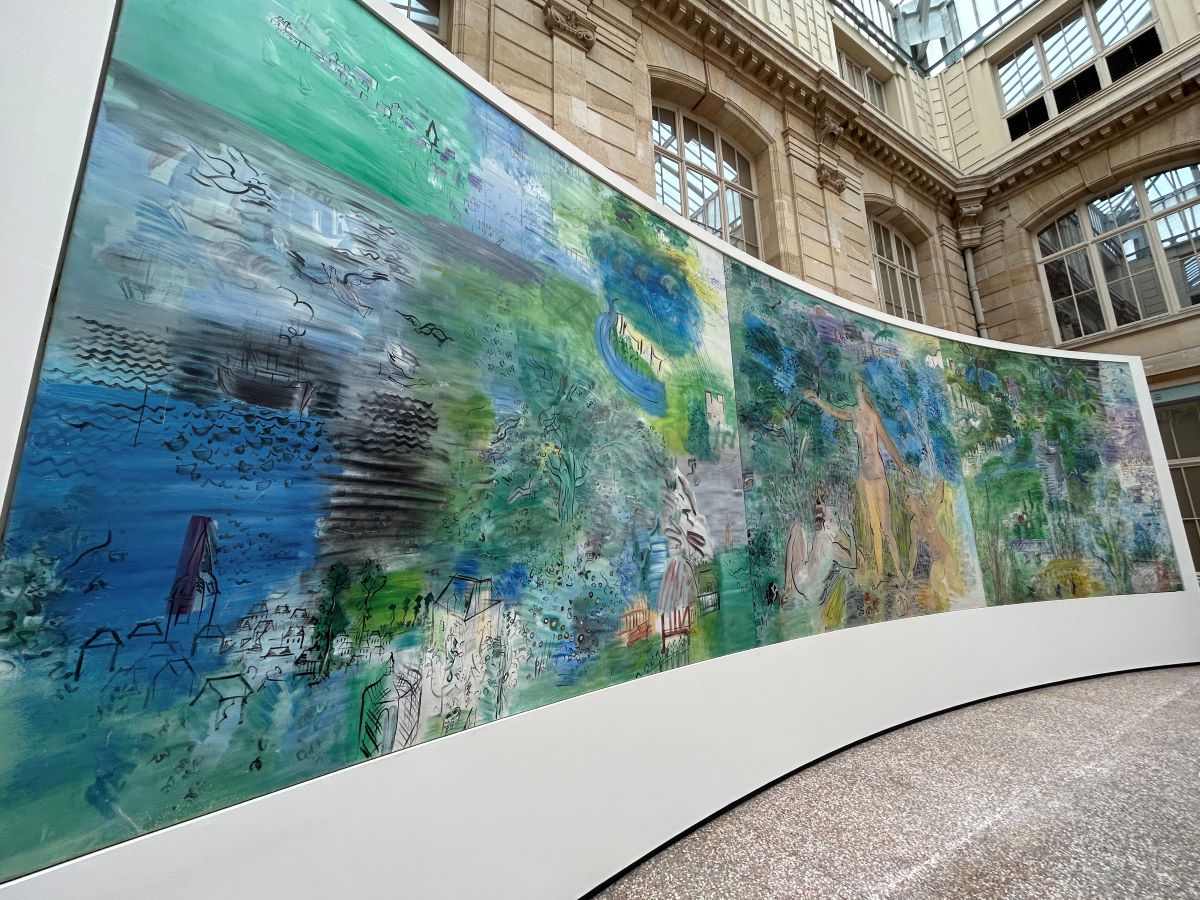On the occasion of the candidacy of Rouen and the Normandy Seine Valley for the title of European Capital of Culture, the Museum of Fine Arts of Rouen unveils a painting by Raoul Dufy hidden for fifteen years.
Who remembered that there was a work hidden behind the immense Martyrdom of Saint Agnes by Joseph-Désiré Court which occupied the entire surface of the back wall of the sculpture garden of the Museum of Fine Arts of Rouen since 2008. And what a work! A monumental triptych by Raoul Dufy that represents the Seine from Paris to Le Havre, via Rouen in three panels of 4 by 3.5 m.
The Rouen Seine Normande 2028 association, which is bidding for the title of European Capital of Culture, welcomes the choice of the Rouen Museums network to bring Raoul Dufy’s triptych to light.
“This is a strong signal of the commitment of the Rouen Museums network and its fine arts museum in the candidacy of the Normandy Seine Valley and Rouen for the title of European Capital of Culture 2028,” says Rebecca Armstrong, the general delegate of the bid. We could not have dreamed of a better symbol: the vision of Le Havre Raoul Dufy remains extremely modern and it is an immense pleasure to rediscover the territory of candidacy thus interpreted. »
Raoul Dufy is the painter of the twentieth century most linked to the landscape of the Seine estuary. Born in Le Havre in 1877, he kept a strong gratitude to this city throughout his life: his wife bequeathed 70 of his works to the museum of Le Havre as a sign of posthumous thanks.
In his triptych, Dufy expresses his affection for Normandy by combining the countryside, river, estuary and ocean in a lyrical celebration of the elements of landscape, colour and light. He uses “an invented plastic vocabulary: simple ripples or sharp accents of glittering wavelets, transformed into triangular abstract patterns as they mechanically rehearse, alternating with long horizontal and parallel touches reflecting the light beams.” (quoted by Dora Perez-Tibi, in Raoul Dufy, Du motif à la couleur, Paris, Somogy, 2003).
Dufy’s painting offers the opportunity to observe the coexistence of ancient monuments and modern constructions, thus highlighting the confrontation between the traditional form of the triptych and the innovative approach presented by the painter.




